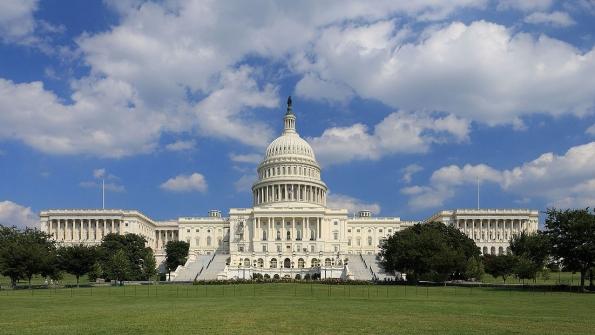
As the full extent of the COVID-19 pandemic impact on airlines became apparent in the spring of 2020, many in the US started comparing it to 9/11. Certainly, both created sudden and severe effects on demand for air travel. But eerily more direct comparisons with 9/11 could be drawn from a riot in America’s capitol in January.
As lawmakers gathered in the Capitol building in Washington DC on Jan. 6 in preparation for a constitutional process confirming the election of the next US president, Democrat Joe Biden, a large crowd opposed to that election result was also congregating further down the National Mall at a rally where Republican President Donald Trump urged the crowd to march to the Capitol, saying “we will never concede” and that Biden would be an “illegitimate president.” The crowd, some armed, invaded the Capitol while Congress was in session. One week later, Trump was impeached by the House of Representatives for incitement of insurrection.
While all of this might seem far removed from the everyday business of commercial air transportation, there was fallout for aviation, direct and indirect. Most immediately, Department of Transportation Secretary Elaine Chao resigned the day after, becoming the first cabinet official to step down because of the violent Capitol invasion and Trump’s involvement.
Senate majority leader Mitch McConnell, House Speaker Nancy Pelosi and Vice President Mike Pence were evacuated to safe hiding by security when the rioters broke in. When they and other lawmakers returned to the Capitol rotunda hours later to complete the election certification, many were clearly shaken by their ordeal. And some recalled how the Capitol had, almost 20 years earlier, been a target for the 9/11 terrorists. The United Airlines Boeing 757 hijacked shortly after the plane took off from New York Newark is believed to have been headed to Washington DC before passengers attempted to take over the cockpit, forcing the hijackers to crash the aircraft into a Pennsylvania field.
The evacuation procedures that propelled lawmakers to safety on Jan. 6, likely saving some of their lives, were established as a result of the 9/11 plot to strike the capitol.
In the days following the Jan. 6 invasion, some of the rioters whose images had been captured by law enforcement agencies turned up at Washington DC airports to find they were denied boarding. Under TSA no-fly rules created by the Department of Homeland Security—an agency created in response to the 9/11 attacks—these Americans were deemed to be an aviation threat. As more images, videos and information became available about what the rioters did, including vicious attacks on Capitol police leading to the death of one officer, and with some Trump supporters disrupting flights to and from Washington, calls grew to expand the no-fly ban to all those involved in the Jan. 6 attacks.
Just as Washington’s three major airports, particularly Reagan National, which is located close to the Capitol and the White House, became subject to special security rules after 9/11, so it was that after Jan. 6, security presence was stepped up with more police officers, dogs and inspections.
FAA administrator Steve Dickson signed an order Jan. 13 directing a stricter legal enforcement policy against unruly passengers, with the agency saying there had been “a disturbing increase in incidents” stemming from the riots and over onboard mask-wearing rules. Instead of issuing warnings, FAA will now pursue legal enforcement action against any passenger who assaults, threatens, intimidates or interferes with airline crew members. The new policy stays in effect through March 30.
Sara Nelson, president of the Association of Flight Attendants union, called for the insurrectionists to be banned from flights out of Washington. “Acts against our democracy, our government, and the freedom we claim as Americans must disqualify these individuals from the freedom of flight,” she said.
Nelson’s statement would have sounded appropriate on 9/12. It also would have been unthinkable that such a call would be made two decades later because of an attack on the Capitol by Americans acting in the name of the US president.




Comments
Dickson is the classic close the barn door after the cows have all left.